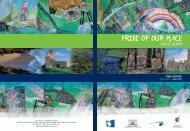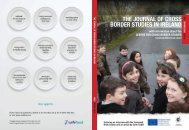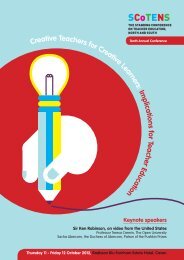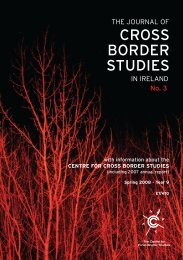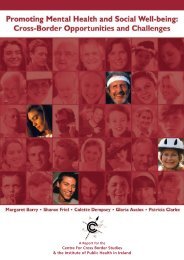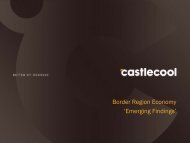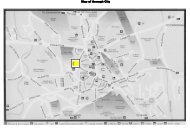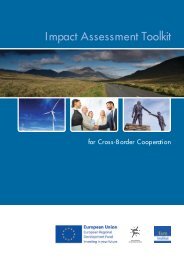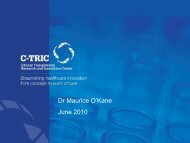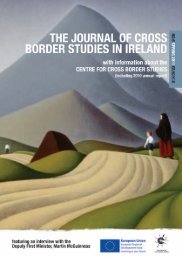improving government service delivery to minority ethnic ... - NCCRI
improving government service delivery to minority ethnic ... - NCCRI
improving government service delivery to minority ethnic ... - NCCRI
You also want an ePaper? Increase the reach of your titles
YUMPU automatically turns print PDFs into web optimized ePapers that Google loves.
<strong>improving</strong><br />
<strong>government</strong><br />
<strong>service</strong><br />
<strong>delivery</strong><br />
<strong>to</strong> <strong>minority</strong><br />
<strong>ethnic</strong> groups<br />
Chapter 3: Scotland Research Findings 102_103<br />
197_www.glasgowcity<br />
council.co.uk/healthycities<br />
Telephone:<br />
+44 (0) 141 287 6988.<br />
Case Example 16 – Engagement<br />
Greater Glasgow NHS 197<br />
198_www.glasgow.gov.uk<br />
Telephone:<br />
+44 (0) 141 341 0019. In 2003 NHS Glasgow produced a report “Listening <strong>to</strong> Communities: Involving People in Health” which<br />
identified the need <strong>to</strong> build the capacity of the <strong>minority</strong> <strong>ethnic</strong> communities <strong>to</strong> be involved effectively with NHS<br />
Services.<br />
As a result the “Building a Bridge Project” was developed as a partnership between Glasgow Healthy City<br />
Partnership, Greater Glasgow NHS Board, Ethnic Minority Enterprise Centre, NHS Health Scotland, Reid Kerr<br />
College and other interested groups.<br />
The overall aim of the project was <strong>to</strong> “<strong>to</strong> enhance Black and Minority Ethnic community involvement in health<br />
promotion agenda through the establishment of a Health Promotion Initiative.”<br />
Central <strong>to</strong> the project’s strategy was the development of a number of facilita<strong>to</strong>rs from the Black and Minority<br />
Ethnic and Refugee communities whose key role was <strong>to</strong> assist in a two-way communication process between<br />
the Health Board and the communities. This would both improve the provider’s knowledge of community needs<br />
and effective ways of delivering those needs and the communities’ knowledge of the available <strong>service</strong>s.<br />
Fifteen facilita<strong>to</strong>rs were recruited and they attended training provided by a local college. An important part of<br />
the training was a placement within a health setting.<br />
Over all the project was successful but there were some useful lessons that were learned:<br />
-<br />
-<br />
Placements in a community setting were more positive experiences than those in an NHS setting.<br />
There was a mismatch of expectations between the placement providers and the facilita<strong>to</strong>rs. In some cases<br />
the expectations of the placement providers were higher than the participants were capable of and in some<br />
cases facilita<strong>to</strong>rs needed more support than was provided by the placement/ project. This highlighted the<br />
need for clarity of purpose, expectations and roles from the outset.<br />
As a result of the project some of the facilita<strong>to</strong>rs found permanent employment within health settings.<br />
Case Example 17 – Education<br />
Translating and Interpreting 198<br />
Glasgow City Council’s Education Department is a partner in the Glasgow Translation and Interpreting Service,<br />
which allows schools access <strong>to</strong> interpreters free at the point of <strong>delivery</strong>. The Department also produces a<br />
comprehensive file of standard letters translated in<strong>to</strong> 15 different languages. For major consultation exercises<br />
all documents are translated in<strong>to</strong> the four main languages; Arabic, Chinese, Punjabi and Urdu.



